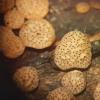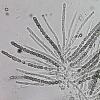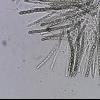
14-11-2024 12:06
 carl van den broeck
carl van den broeck
On November 8th I found very small orange discs st

14-11-2024 15:31
 Bernard CLESSE
Bernard CLESSE
Bonjour à toutes et tous,Que pensez-vous de ce Sc

14-11-2024 04:18
 Götz Palfner
Götz Palfner
Dear community, is this Nemania carbonacea? Micros

14-11-2024 00:34
• Apothecia with predominantly yellow or brown h

11-11-2024 23:17
• Macro and habitat suggest Hyaloscyphaceae s.l.

13-11-2024 08:01
 Stephen Martin Mifsud
Stephen Martin Mifsud
I am revising some old material again and I have t

09-11-2024 16:41
 Stephen Martin Mifsud
Stephen Martin Mifsud
Hello everyone, we have recently published a paper

11-11-2024 14:05
 Edouard Evangelisti
Edouard Evangelisti
Bonjour le forum, Je sollicite votre avis concern
Poronia like
M.R. Asef,
16-11-2024 12:53
Any idea?
Michel Hairaud,
16-11-2024 13:15

Re : Poronia like
Hi M.R.
Spores do not point to a Poronia species but you should consider Hypocrea
AmitiésMichel
Spores do not point to a Poronia species but you should consider Hypocrea
AmitiésMichel


